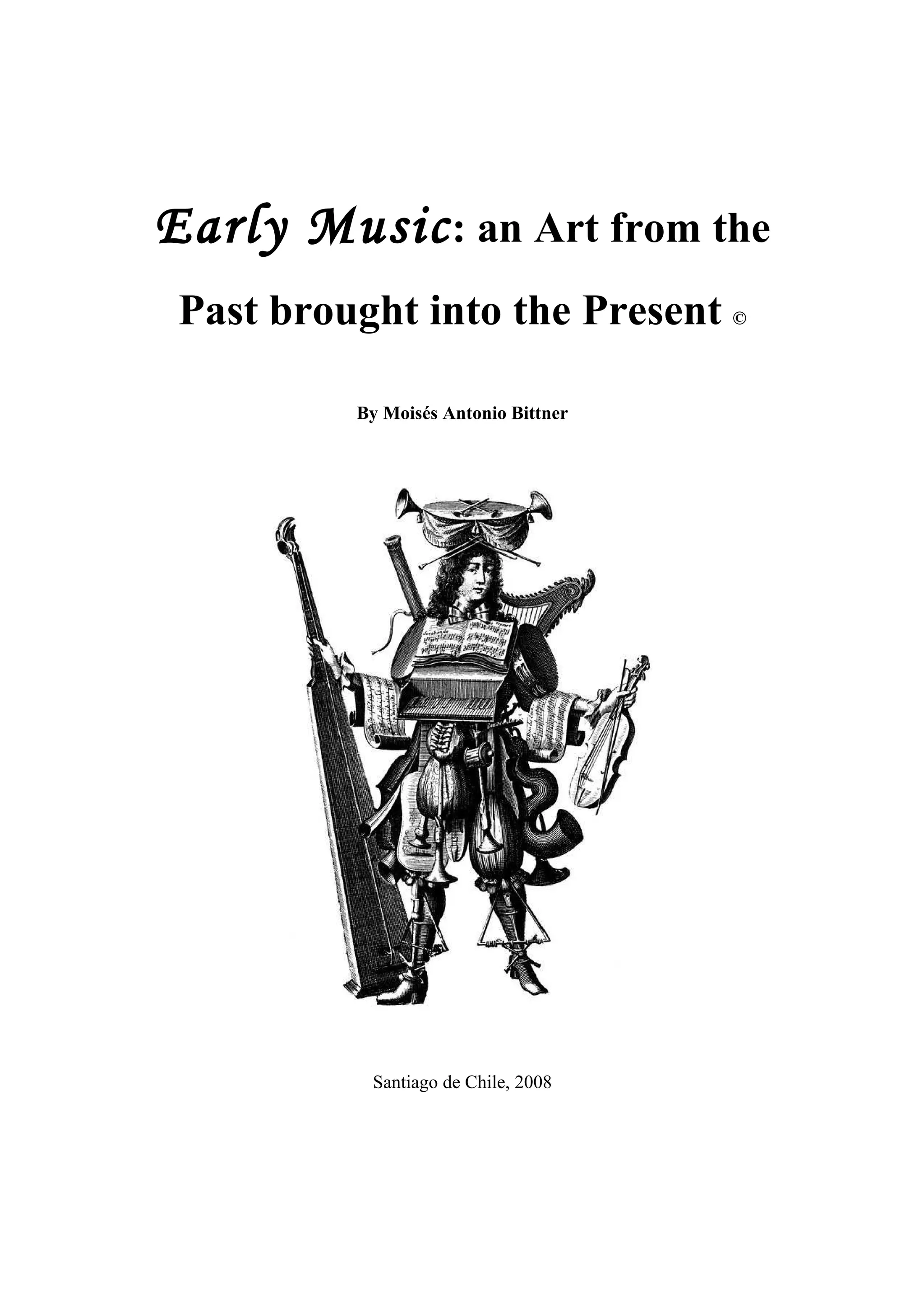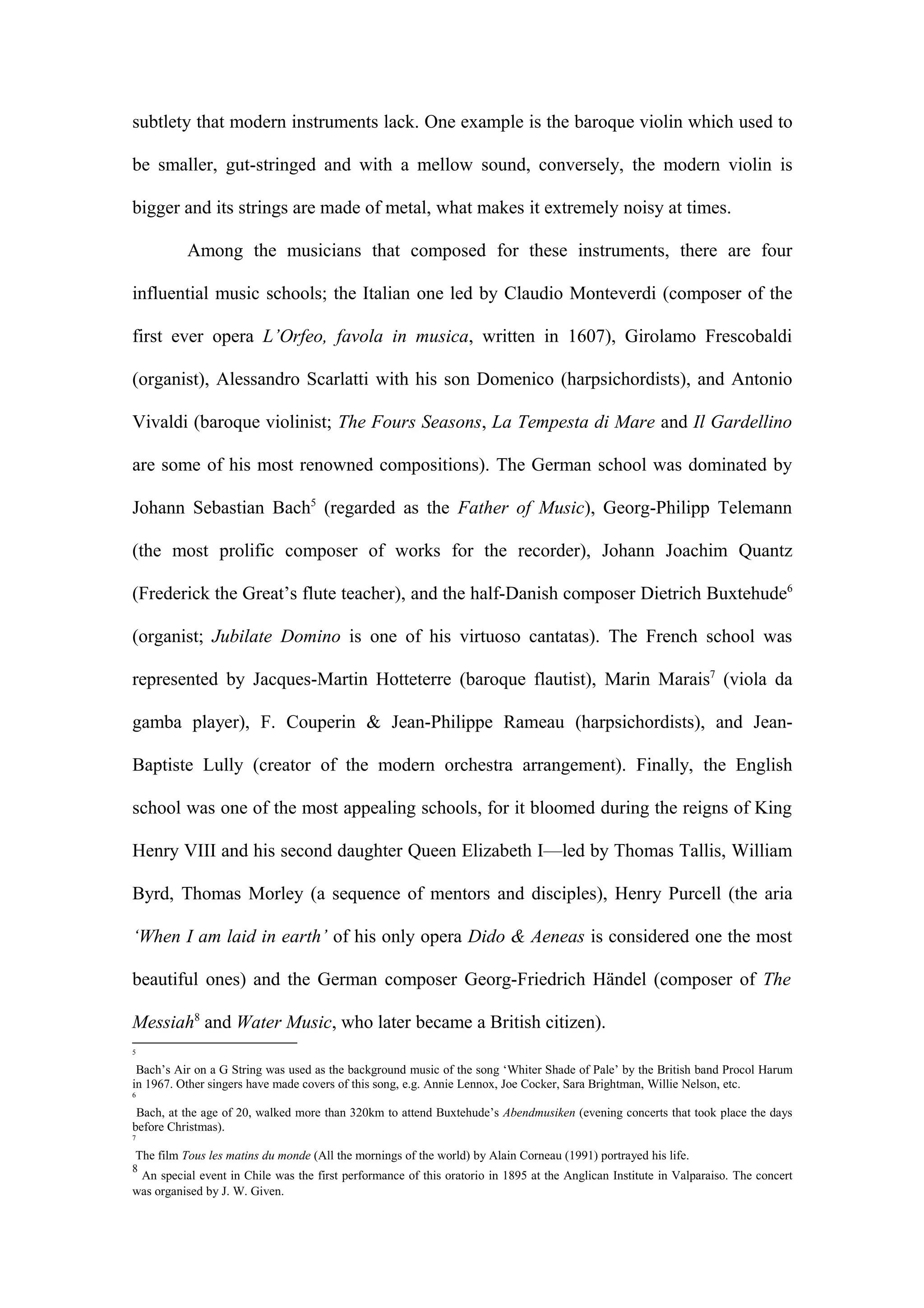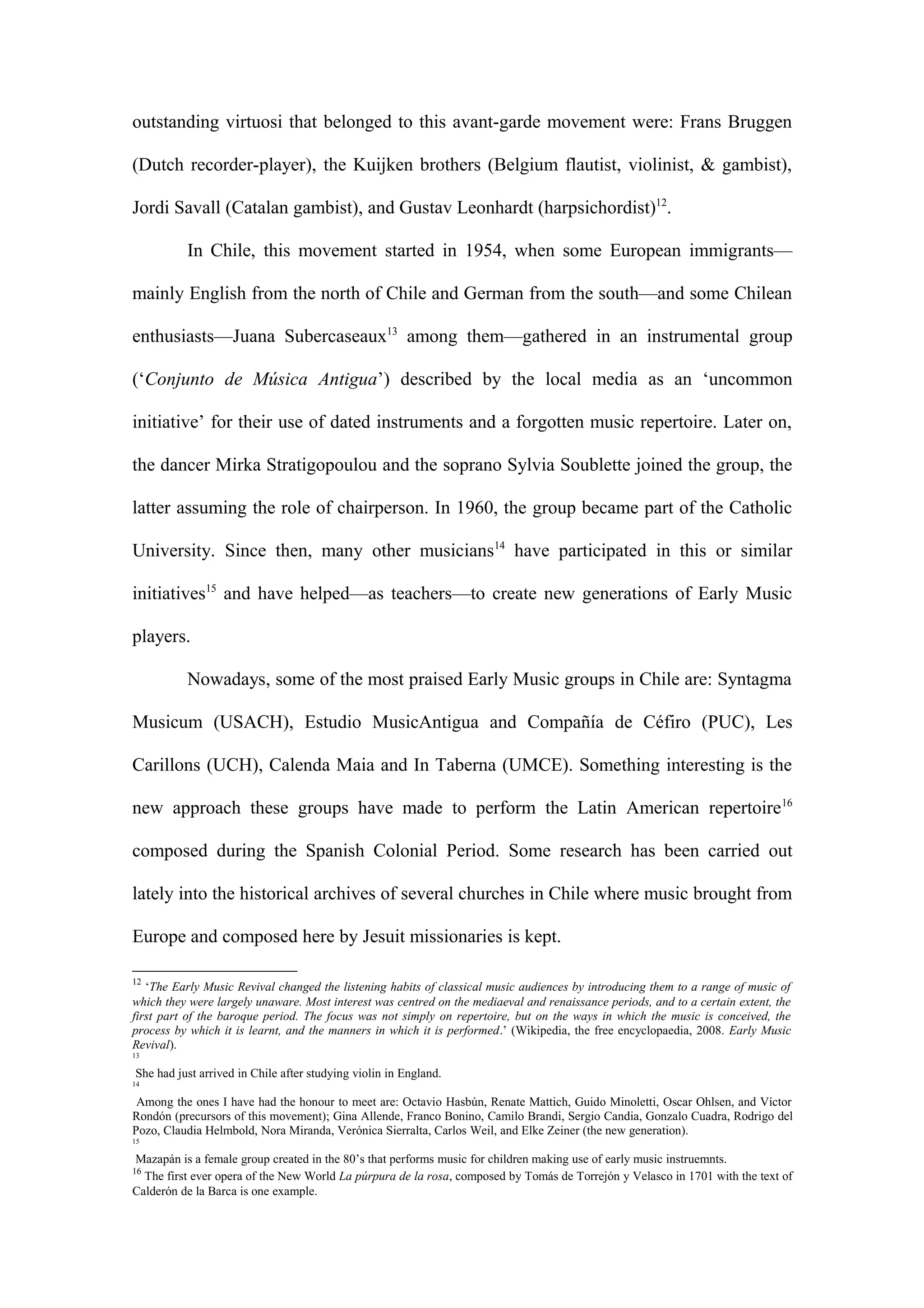Early Music refers to European music from the Medieval, Renaissance, and Baroque periods, typically ending around 1750 with the death of Bach. This genre was revived in the 19th century but gained more popularity in the mid-20th century. In Chile, early music groups began forming in the 1950s and have grown in number and quality since then. Some prominent modern Chilean early music ensembles are Syntagma Musicum, Estudio MusicAntigua, and Les Carillons. The author is a member of an early music group called The Broken Consort, which aims to increase awareness of this musical style.






